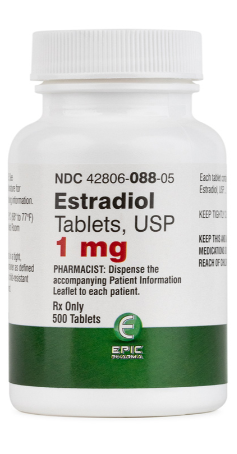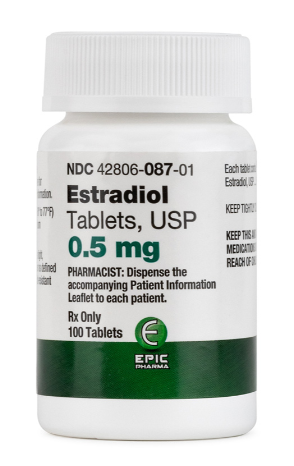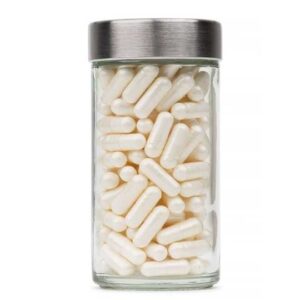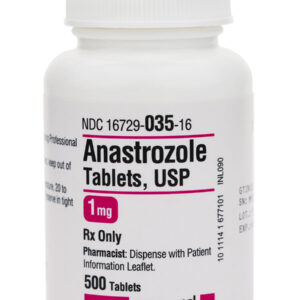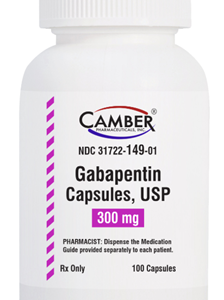Estradiol
Dosages
Dosages 0.5mg & 1mg
Mechanisms of Action
The primary source of estrogens in premenopausal women is the ovary, which normally secretes 0.07 to 0.5 mg of estradiol daily, depending on the phase of the menstrual cycle. Once estrogens enter the cells of responsive tissues (e.g., female organs, breasts, hypothalamus, pituitary), they increase the rate of synthesis of DNA, RNA, and some proteins. The secretion of gonadotropin-releasing hormone by the hypothalamus is reduced during estrogen administration, causing reduction in follicle-stimulating hormone (FSH) and luteinizing hormone (LH) from the pituitary. Exogenous estrogens elicit all of the actions of endogenous estrogens. Estrogens are responsible for the growth and development of female sex organs and the maintenance of sex characteristics including growth of axillary and pubic hair and shaping of body contours and skeleton. At the cellular level, estrogens increase cervical secretions, cause proliferation of the endometrium, and increase uterine tone. Paradoxically, prolonged administration of estrogen can shrink the endometrium. During the preovulatory or nonovulatory phase of the menstrual cycle, withdrawal of estrogen can initiate menstruation; in the ovulatory phase, the decrease in progesterone secretion is the more significant factor causing menstruation. In post-menopausal use, amenorrhea occurs in most women within several months of oral estrogen use.
Estrogens have a weak anabolic effect and also can affect bone calcium deposition and accelerate epiphysial closure. Estrogens appear to prevent osteoporosis associated with the onset of menopause. Estrogens generally have a favorable effect on blood lipids, reducing LDL- and increasing HDL-cholesterol concentrations on average, by 15%. Serum triglycerides increase with estrogen administration. Estrogens increase the rate of synthesis of many proteins, including thyroid binding globulin and several clotting factors. Estrogens reduce levels of antithrombin III, and increase platelet aggregation. Estrogens also enhance sodium and fluid retention.
Unopposed estrogen has been associated with increased risk of endometrial cancer in menopausal women with an intact uterus; concomitant progestin therapy reduces, but does not eliminate, this risk. However, combination hormone replacement therapy (HRT) may add additional health risks for some women, as evidenced by the HERS trials, the Women’s Health Initiative study. Risks and benefits of estrogen plus progestin in healthy postmenopausal women: principal results From the Women’s Health Initiative ra, and other investigations. In particular, the Women’s Health Initiative (WHI) study reported an increased risk of myocardial infarction, stroke, dementia, invasive breast cancer, and venous thromboembolism in patients taking combination HRT and an increased risk of stroke, dementia, and venous thromboembolism in patients taking estrogen only HRT; an increased risk of invasive breast cancer was not evident in women taking estrogen only. Because of these findings, patients should be prescribed estrogen HRT or estrogen-progestin HRT for the shortest duration consistent with the treatment goals. Estrogen HRT with or without a progestin is not indicated and should not be used to prevent coronary artery disease or other cardiovascular disease. The risks and benefits of HRT must be determined for a woman individually.
In men with advanced prostate cancer, estrogens exert their effect by inhibition of the hypothalamic-pituitary axis through negative feedback. This results in decreased secretion of luteinizing hormone (LH). Decreased testosterone production from the Leydig cells in the testes occurs, which may decrease tumor growth and lower prostate specific antigen (PSA) levels. Improvement in bone metastasis may also occur. In the past, high-dose estrogen therapy was also used in selected men and postmenopausal women with inoperable, progressive breast cancer. Since the development of selective estrogen receptor modifiers (SERMs), high-dose estrogen therapy for the palliative treatment of breast cancer is rarely used today.
Contraindications & Precautions
Do not use estradiol products in patients with a known hypersensitivity to any of the specific product ingredients; estradiol is contraindicated in patients with known anaphylactic reactions or history of angioedema to the drug. Cases of both anaphylactic reactions and angioedema have been reported in patients taking estrogens, including estradiol. Events have developed in minutes and have required emergency medical treatment. Exogenous estrogens may also induce or exacerbate symptoms of angioedema, particularly in women with hereditary angioedema, which can be hormonally sensitive.
Interactions
Please discuss with your healthcare provider.
Adverse Reactions
A variety of endocrine and urogenital effects can occur during therapy with estradiol. Changes in sexuality include libido increase or libido decrease. Positive changes in libido may occur as a result of improvements in vulvar and vaginal atrophy in postmenopausal women. Vaginal changes such as discharge or irritation, vaginitis, cervicitis, or changes in cervical erosion (e.g., cervical ectropion) may appear. Vulvovaginal or vaginal candidiasis or other mycotic infections may occur infrequently with systemic or vaginal estrogen therapy.
Storage
Store this medication at 68°F to 77°F (20°C to 25°C) and away from heat, moisture and light. Keep all medicine out of the reach of children. Throw away any unused medicine after the beyond use date. Do not flush unused medications or pour down a sink or drain.

